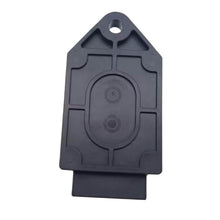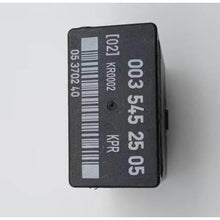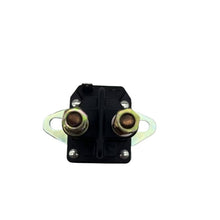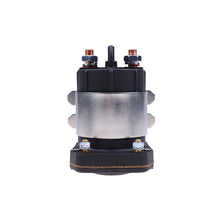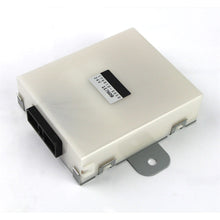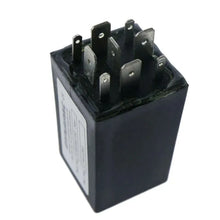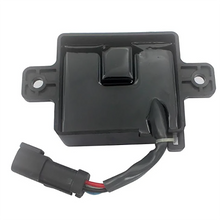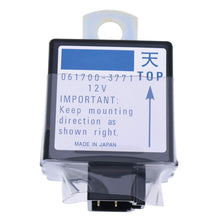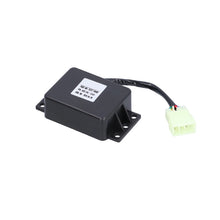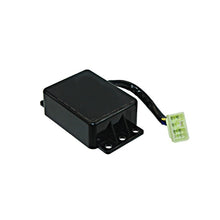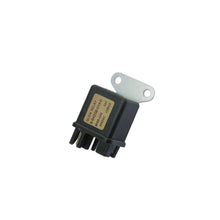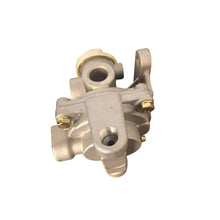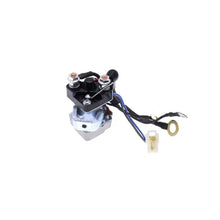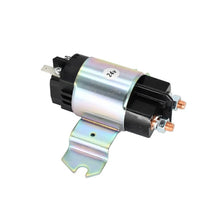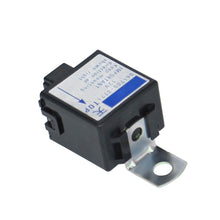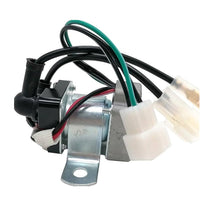Relay
A relay is an electrically operated switch. It consists of a set of input terminals for a single or multiple control signals, and a set of operating contact terminals. The switch may have any number of contacts in multiple contact forms, such as make contacts, break contacts, or combinations thereof.
Relays are used to control high voltage circuits with the help of low voltage signals. Similarly they are used to control high current circuits with the help of low current signals. They are also used as protective relays. By this function all the faults during transmission and reception can be detected and isolated.
Diselmart offer various kinds of relay, which is widely used in auto cars, construction machinery and agricultural machinery.
Selection of an appropriate relay for a particular application requires evaluation of many different factors:
- Number and type of contacts — normally open, normally closed, (double-throw)
- Contact sequence — "make before break" or "break before make". For example, the old style telephone exchanges required make-before-break so that the connection didn't get dropped while dialing the number.
- Contact current rating — small relays switch a few amperes, large contactors are rated for up to 3000 amperes, alternating or direct current
- Contact voltage rating — typical control relays rated 300 VAC or 600 VAC, automotive types to 50 VDC, special high-voltage relays to about 15,000 V
- Operating lifetime, useful life — the number of times the relay can be expected to operate reliably. There is both a mechanical life and a contact life. The contact life is affected by the type of load switched. Breaking load current causes undesired arcing between the contacts, eventually leading to contacts that weld shut or contacts that fail due to erosion by the arc.
- Coil voltage — machine-tool relays usually 24 VDC, 120 or 250 VAC, relays for switchgear may have 125 V or 250 VDC coils,
- Coil current — Minimum current required for reliable operation and minimum holding current, as well as effects of power dissipation on coil temperature at various duty cycles. "Sensitive" relays operate on a few milliamperes.
- Package/enclosure — open, touch-safe, double-voltage for isolation between circuits, explosion proof, outdoor, oil and splash resistant, washable for printed circuit board assembly
- Operating environment — minimum and maximum operating temperature and other environmental considerations, such as effects of humidity and salt
- Assembly — Some relays feature a sticker that keeps the enclosure sealed to allow PCB post soldering cleaning, which is removed once assembly is complete.
- Mounting — sockets, plug board, rail mount, panel mount, through-panel mount, enclosure for mounting on walls or equipment
- Switching time — where high speed is required
- "Dry" contacts — when switching very low level signals, special contact materials may be needed such as gold-plated contacts
- Contact protection — suppress arcing in very inductive circuits
- Coil protection — suppress the surge voltage produced when switching the coil current
- Isolation between coil contacts
- Aerospace or radiation-resistant testing, special quality assurance
- Expected mechanical loads due to acceleration — some relays used in aerospace applications are designed to function in shock loads of 50 g, or more.
- Size — smaller relays often resist mechanical vibration and shock better than larger relays, because of the lower inertia of the moving parts and the higher natural frequencies of smaller parts. Larger relays often handle higher voltage and current than smaller relays.
- Accessories such as timers, auxiliary contacts, pilot lamps, and test buttons.
- Regulatory approvals.
- Stray magnetic linkage between coils of adjacent relays on a printed circuit board

